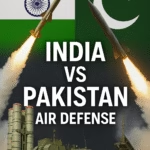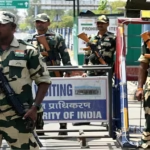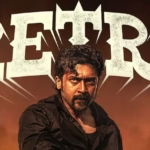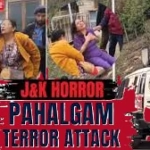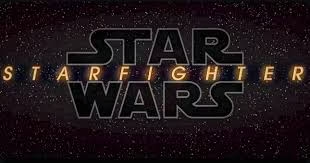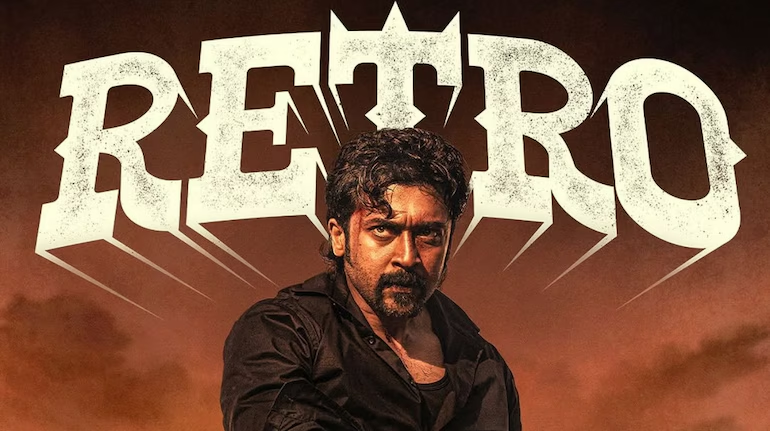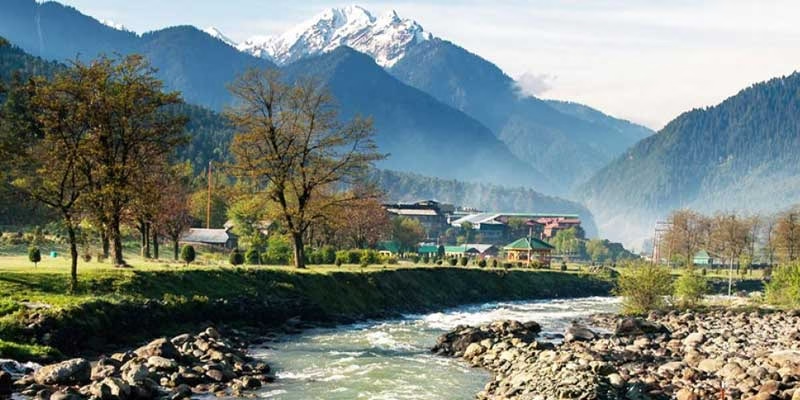The unmistakable scream of a TIE fighter. The graceful S-foils of an X-wing locking into attack position. The elegant curves of a Naboo N-1. Few elements of the Star Wars universe captivate our imagination quite like the legendary starfighters that have dominated the skies and space battles across the saga. These nimble spacecraft aren’t just background elements in epic space battles—they’re characters in their own right, each with distinctive personalities, histories, and iconic pilots who made them legendary.
Introduction
In the vast Star Wars universe, starfighters represent the perfect blend of form and function—sleek, maneuverable spacecraft designed primarily for space combat and dogfighting. These single-pilot or small-crew vessels have become iconic symbols of both the Rebel Alliance and the Galactic Empire, as well as the various factions that preceded and followed them. From the Battle of Yavin to the skirmishes above Exegol, Star Wars starfighters have been at the heart of the franchise’s most thrilling moments.
What makes Star Wars starfighters so captivating isn’t just their sleek designs or impressive capabilities—it’s how they embody the philosophies of their creators. The utilitarian, mass-produced TIE fighters reflect the Empire’s doctrine of overwhelming numbers and expendable pilots, while the sturdier, shield-equipped X-wings represent the Rebellion’s emphasis on pilot survival and adaptability. Each Star Wars starfighter tells a story about the faction that produced it, the era it belongs to, and the characters who fly it.

Whether you’re a casual fan who simply appreciates the aesthetic of these spacecraft or a dedicated enthusiast who can recite the technical specifications of every variant, this comprehensive guide will take you on a journey through the fascinating world of Star Wars starfighters. Strap in, power up your engines, and prepare to explore these magnificent machines in exhaustive detail!
The History of Star Wars Starfighters
The concept of Star Wars starfighters dates back to the very beginning of the franchise. When George Lucas envisioned his space opera, he knew that dogfights between small, agile spacecraft would be central to capturing the excitement he wanted. The original trilogy introduced us to the iconic X-wing and TIE fighter designs that would become synonymous with the franchise, but the history of these vessels—both in our world and in the Star Wars universe—goes much deeper.
Real-World Development
The original Star Wars starfighter designs were heavily influenced by World War II aircraft. The dogfights we see in the 1977 film were directly inspired by footage of aerial combat from that era, with editors initially using World War II air combat clips as placeholders while Industrial Light & Magic completed the special effects. This influence is evident in how the battles were choreographed and filmed, creating the sensation of aerodynamic flight even in the vacuum of space.
Sound designer Ben Burtt created the distinctive howl of the TIE fighter by combining an elephant call with the sound of a car driving on wet pavement. Some have likened the sound to the terrifying sirens of German Stuka dive bombers, which were used to intimidate civilians during World War II bombing raids—a fitting parallel for the Empire’s instruments of terror.
In-Universe Evolution
Within the Star Wars universe, starfighter technology evolved dramatically across different eras. During the High Republic era, the Jedi Order utilized specialized starfighters for peacekeeping missions. By the time of the Clone Wars, the Galactic Republic deployed ARC-170 starfighters and early Jedi starfighters, which would influence later designs.
The fall of the Republic and rise of the Empire marked a shift in starfighter philosophy. The Empire mass-produced the inexpensive, unshielded TIE fighter, prioritizing quantity over pilot safety. Meanwhile, the Rebel Alliance cobbled together a fleet of various starfighters, including repurposed Y-wings stripped of their armor to improve speed and maneuverability14.
After the fall of the Empire, the New Republic standardized its starfighter corps around updated X-wing models, while the First Order developed advanced TIE fighters with shields and hyperdrives—improvements their Imperial predecessors lacked. This technological arms race continued throughout the canon, with each faction iterating on previous designs to gain tactical advantages.
Types of Iconic Starfighters
X-Wing Starfighter
The X-wing starfighter stands as perhaps the most recognizable Star Wars starfighter in the entire franchise. Manufactured by Incom Corporation, this versatile craft was the primary starfighter of the Rebel Alliance during the Galactic Civil War. Its name derives from the distinctive X-shape formed when its four wings (S-foils) are deployed in attack position.
The X-wing features impressive technical specifications: measuring 13.4 meters in length, it’s armed with four laser cannons mounted at the tips of each wing and two proton torpedo launchers near the nose. These weapons are guided by a targeting computer that can be operated by the pilot, though as Luke Skywalker famously demonstrated during the Battle of Yavin, sometimes trusting in the Force proves more effective.
One of the X-wing’s greatest strengths is its versatility. As noted in the Rebel Alliance’s assessment, “X-wings were nimble enough to dogfight with TIE fighters while tough enough to slug it out with Imperial ships of the line”. This balance made them ideal for the diverse mission requirements of a rebellion fighting against overwhelming odds.
The T-65 X-wing model was used throughout the Galactic Civil War, from the Battle of Yavin to the Battle of Endor. Later, the Resistance would utilize the upgraded T-70 model. Throughout the saga, X-wings have been piloted by some of the most skilled and famous pilots, including Luke Skywalker, Wedge Antilles, Poe Dameron, and eventually Rey Skywalker, who flew Luke’s restored X-wing to Exegol.
TIE Fighter
If the X-wing represents the heart of the Rebellion, the TIE fighter (“Twin Ion Engine”) is undoubtedly the face of Imperial power. These distinctive spacecraft, with their spherical cockpits and hexagonal wings, became the signature fighter of the Galactic Empire. Manufactured by Sienar Fleet Systems, the standard TIE/ln (line edition) fighter measures 7.2 meters in length and 6.7 meters in width.
The TIE fighter embodies the Empire’s military doctrine perfectly. Grand Moff Tarkin specifically commissioned these starfighters to be “fast, maneuverable, energy-efficient, and inexpensive”. The Empire prioritized overwhelming numbers, considering these fighters expendable assets. This philosophy is reflected in the TIE’s design choices: it lacks shields, a hyperdrive, and life support systems, requiring pilots to wear specialized flight suits.
Armed with twin SFS L-s1 laser cannons, the standard TIE fighter was primarily designed for space superiority missions—engaging enemy starfighters and protecting larger Imperial vessels. The distinctive howl of a TIE fighter’s engines became a psychological weapon in itself, striking fear into the hearts of the Empire’s enemies.
Several specialized variants expanded the TIE family. Darth Vader’s TIE Advanced x1 featured improved armor, shields, and a hyperdrive. The dagger-shaped TIE Interceptor was developed specifically to counter the A-wing’s speed. The TIE bomber, with its unique double-hull design, was used for planetary bombardment and attacking capital ships. Later, the First Order would develop improved TIE fighters with shields and hyperdrives, addressing the weaknesses of their Imperial predecessors.
A-Wing, Y-Wing, B-Wing
Beyond the iconic X-wing, the Rebel Alliance utilized several other specialized Star Wars starfighter models, each designed for specific tactical roles.
The A-wing interceptor was the fastest starfighter in the Rebel fleet. Designed primarily for speed and maneuverability, A-wings excelled at interception missions and hit-and-run attacks. When these nimble craft appeared on the battlefield, the Empire immediately began developing the TIE Interceptor as a counter6. Though lacking in heavy firepower, the A-wing’s exceptional speed made it ideal for reconnaissance and escort missions.
The Y-wing bomber represents the workhorse of the Rebel fleet. Originally designed for the Republic during the Clone Wars, many of these bombers were stripped down by the Rebellion to reduce weight and improve performance14. Despite being slower and less maneuverable than other starfighters, the Y-wing’s durability and heavy payload capacity made it invaluable for attacking capital ships and fixed installations. A standard Y-wing carried a pilot in the forward cockpit and could accommodate a gunner in some variants. Its twin R200 ion jet engines provided reliable, if not spectacular, propulsion14.
The B-wing fighter, perhaps the oddest-looking starfighter in the Rebel Alliance arsenal, was specifically designed to destroy Imperial capital ships. Developed by the brilliant Mon Calamari engineer Quarrie, the B-wing features a unique gyroscopic cockpit system that remains level regardless of the fighter’s orientation. The B-wing’s main airfoil houses most of its systems, including the cockpit, engine cluster, and weapons pod. Though pilots complained it “maneuvered like a freighter,” the B-wing’s impressive weapons array made it a formidable assault starfighter.
Naboo N-1 Starfighter
The Naboo N-1 starfighter exemplifies the perfect marriage of art and function that characterizes Naboo technology. Its sleek, streamlined design and striking yellow color scheme complemented by chrome finishes reflects the cultural aesthetics of the peaceful planet.
Handcrafted by the Theed Palace Space Vessel Engineering Corps, the N-1 measures 11 meters in length and features twin radial J-type engines capped in gleaming chrome. These engines were specially configured to reduce pollution, demonstrating Naboo’s commitment to environmental protection. The N-1 carries an astromech droid in a socket behind the pilot, though this can be removed based on pilot preference.
Despite its elegant appearance, the N-1 is no slouch in combat. Armed with twin blaster cannons and dual fire-linked torpedo launchers, it proved surprisingly effective during the Battle of Naboo when Anakin Skywalker—accidentally—flew one into the Trade Federation control ship and destroyed it from within.
Decades later, Din Djarin (the Mandalorian) acquired a vintage N-1 starfighter which he and mechanic Peli Motto extensively modified. They customized it with a turbonic venturi assimilator from a Republic-era starfighter and fabricated an induction intake charger to double the spacecraft’s output coefficient, making it even faster than the classic design.
Jedi Starfighters
The Jedi Order utilized specialized starfighters that reflected their unique role as peacekeepers in the galaxy. During the Clone Wars, Jedi Knights piloted the Delta-7 Jedi starfighter and later the Eta-2 Jedi Interceptor.
The Delta-7 (and later Delta-7B) Aethersprite-class light interceptor was a sleek, wedge-shaped vessel designed for the Jedi Order. These craft were often customized to match their Jedi pilots’ preferences and featured an astromech socket that could accommodate a specialized astromech like R2-D2. Masters like Obi-Wan Kenobi and Plo Koon were known to pilot these vessels during the early years of the Clone Wars.
The Eta-2 Actis-class Jedi Interceptor was a later development that emphasized speed and maneuverability at the expense of defenses. Smaller than its predecessor, the Eta-2 bore design elements that would later influence the Imperial TIE fighter, particularly in its wing configuration. Anakin Skywalker and Obi-Wan Kenobi flew these interceptors during the Battle of Coruscant at the beginning of Revenge of the Sith.
Jedi starfighters were distinct from standard military vessels in that they were often customized for their Force-sensitive pilots. A Jedi could use their connection to the Force to enhance their piloting abilities, making these specialized craft even more formidable in the right hands.
Design and Technology
Imperial vs. Rebel Design Philosophy
The contrasting design philosophies between Imperial and Rebel starfighters perfectly reflect the core values of each faction. Imperial TIE fighters embody the Empire’s industrial might and callous attitude toward individual lives. Mass-produced, unshielded, and lacking hyperdrives, TIE fighters were expendable assets—much like the pilots who flew them. Their standardized design made them easy to manufacture in enormous quantities, allowing the Empire to overwhelm opponents through sheer numbers rather than superior technology.
In contrast, Rebel starfighters emphasized pilot survival and versatility. X-wings, Y-wings, and other Alliance craft featured robust deflector shields, hyperdrive capabilities, and life support systems. The higher cost and maintenance requirements were justified by the Alliance’s limited pool of trained pilots—each one too valuable to lose in a disposable vessel. This philosophy extended to the ships’ aesthetics as well, with Rebel craft often featuring more organic, asymmetric designs compared to the geometric, standardized Imperial vessels.
Technology Systems
Star Wars starfighters employ various technologies that make space combat possible. Propulsion systems range from the twin ion engines of TIE fighters to the fusion engines of Rebel craft. While most fighters use similar weapons—typically laser cannons and proton torpedoes—their implementation varies significantly between models.
Deflector shield technology represents one of the most significant technological divides between Imperial and Rebel designs. The “Defender” deflector shield generator found on X-wings provided crucial protection against enemy fire, allowing pilots to survive hits that would instantly destroy an unshielded TIE fighter. However, these shields came with trade-offs in terms of power consumption, cost, and maintenance requirements.
Sensor and targeting systems are equally crucial to starfighter effectiveness. The Y-wing, for instance, features an impressive array of sensors including “a lock Track full spectrum transceiver and longrange phased tachon detection array as well as a short-range primary threat analysis grid”—technology that ensures pilots maintain situational awareness in the chaos of battle14.
Real-World Inspirations
The designs of Star Wars starfighters draw heavily from real-world aircraft, particularly those from World War II. The X-wing’s four-engine configuration echoes the profile of the P-38 Lightning fighter, while the cockpit arrangement resembles that of American fighters from the era. The TIE fighter’s unique howl was deliberately engineered to evoke the psychological terror of the Junker Ju 87 “Stuka” dive bomber’s sirens4.
The combat tactics portrayed in Star Wars also mirror historical aerial warfare. The trench run sequence in A New Hope, with X-wings flying in tight formation while being pursued by Darth Vader and his wingmen, directly references World War II bombing runs. Even the dialogue used by pilots during these sequences—”Stay on target!” and “Cover me, Porkins!”—echoes real military radio communications.
According to the original film’s special effects team, editors initially used World War II air combat footage as placeholders while they completed the visual effects, ensuring the final sequences would capture the same intensity and rhythm5. This historical influence grounds the fantastical space battles in familiar combat scenarios, making them more emotionally resonant despite their otherworldly setting.
Starfighters Across Star Wars Media
Star Wars starfighters have appeared across virtually every medium in the franchise, often taking center stage in action sequences and storylines. Each portrayal adds new dimensions to these iconic vessels, expanding their lore and technical details.
Films and Television
In the original trilogy, starfighters are central to the most crucial battles—the Death Star runs in both A New Hope and Return of the Jedi, as well as the asteroid field chase in The Empire Strikes Back. The prequel trilogy expanded the starfighter roster, introducing Naboo N-1s, Jedi starfighters, and droid tri-fighters. The sequel trilogy continued this tradition with updated X-wings and TIE fighters sporting new capabilities and aesthetics.
Animated series like The Clone Wars and Rebels dedicated entire episodes to starfighter combat, with characters like Anakin Skywalker and Hera Syndulla showcasing exceptional piloting skills. These shows also introduced unique starfighters like the Blade Wing prototype that would eventually become the B-wing.
Video Games
Star Wars starfighters have been the focus of numerous video games, allowing fans to experience piloting these iconic craft firsthand. Titles like Star Wars: Starfighter and Star Wars: Jedi Starfighter put players in the cockpit of various vessels, including the Naboo N-1 and the Jedi Starfighter.
Star Wars: Starfighter, released in 2001, lets players take control of the N-1 Starfighter and other vessels in missions ranging from training exercises to full-scale battles. The game features detailed flight mechanics and mission structures that highlight the unique capabilities of each starfighter.
The upcoming Star Wars: Starfighter film, announced at the 2025 Star Wars Celebration in Tokyo, promises to bring these beloved spacecraft to life in new ways. Starring Ryan Gosling and directed by Shawn Levy, the film is scheduled for release on May 28, 2027, and will be set after the events of The Rise of Skywalker. This renewed focus on starfighters demonstrates their enduring appeal within the franchise.
Books and Comics
Expanded universe materials have provided deeper insights into the development, capabilities, and pilots of various Star Wars starfighters. Technical guides detail the specifications of each vessel, while novels often follow the adventures of starfighter pilots like Wedge Antilles and the members of Rogue Squadron. These stories explore the bonds formed between pilots and their craft, portraying starfighters almost as characters themselves—loyal companions in the struggle against tyranny.
Fan Culture and Merchandising
Star Wars starfighters hold a special place in fan culture, often becoming the objects of intense devotion and collectibility. From meticulously detailed replicas to interactive experiences, these iconic vessels have been recreated in countless forms for fans to enjoy.
LEGO has produced numerous Star Wars starfighter sets over the years, allowing fans to build their own X-wings, TIE fighters, and more exotic craft. These models range from simple, affordable sets to complex Ultimate Collector Series editions with thousands of pieces and museum-quality detail.
Video games centered around starfighter combat, like the X-Wing and TIE Fighter simulation series, developed cult followings by offering authentic piloting experiences. These games put players in the cockpit with realistic controls and mission objectives, cementing many fans’ love for specific starfighter models.
The attachment many fans feel to Star Wars starfighters transcends mere appreciation of design. These vessels represent freedom, adventure, and the opportunity to make a difference—themes at the heart of the Star Wars saga. When Luke switches off his targeting computer and trusts in the Force, or when Poe Dameron takes on an entire First Order fleet single-handedly, these moments resonate because they capture the essence of what makes Star Wars special: the idea that individuals can change the course of history through courage and conviction.
The Cultural Impact of Star Wars Starfighters
The influence of Star Wars starfighters extends far beyond the boundaries of the franchise. Their distinctive designs and capabilities have inspired generations of artists, engineers, and dreamers.
In the realm of science fiction, Star Wars starfighters established new visual language for spacecraft design. Moving away from the clinical, utilitarian aesthetics of earlier sci-fi, these vessels introduced a more lived-in, functional appearance that suggested histories and personalities. This approach—sometimes called the “used future”—revolutionized how fictional spacecraft were conceived and designed.
Even real-world aerospace design has felt the influence of these fictional craft. Engineers at NASA and private space companies have acknowledged the inspirational role Star Wars played in their career choices. The X-wing’s distinctive profile has been referenced in concept designs for experimental aircraft, and the aerodynamic principles explored in these fictional vessels have occasionally found their way into actual aerospace research.
Perhaps most significantly, Star Wars starfighters have shaped how we imagine space combat and exploration. Before Star Wars, most depictions of space travel emphasized its differences from atmospheric flight. After the release of the original film, with its dynamic, World War II-inspired dogfights, audiences came to expect a certain kind of kinetic excitement from space action sequences—an expectation that continues to influence science fiction to this day.
Conclusion
From the moment the first Star Wars film hit theaters in 1977, starfighters have been central to the saga’s appeal. These nimble spacecraft represent the perfect encapsulation of the franchise’s spirit—the blend of ancient mythic themes with futuristic technology, the emphasis on individual heroism within epic conflicts, and the distinctive visual language that made Star Wars instantly recognizable.
Whether you’re drawn to the elegant simplicity of the TIE fighter, the reliable versatility of the X-wing, or the artistic flourishes of the Naboo N-1, there’s a Star Wars starfighter that speaks to every fan’s imagination. These vessels are more than just vehicles or weapons—they’re expressions of their pilot’s personalities and their creators’ values.
The next time you revisit the Star Wars saga, consider paying special attention to the starfighters. Notice how their designs evolve to reflect changing factions and eras. Observe the distinctive flight characteristics that make each model unique. Listen for the telltale engine sounds that signal whether friend or foe approaches. These details enrich the viewing experience and deepen appreciation for the incredible worldbuilding that makes Star Wars such an enduring cultural phenomenon.
As we look forward to new additions to the saga, including the upcoming Star Wars: Starfighter film, one thing remains certain: these iconic spacecraft will continue to capture our imaginations and inspire dreams of adventure in that galaxy far, far away.
Read more at worldsinsight.


